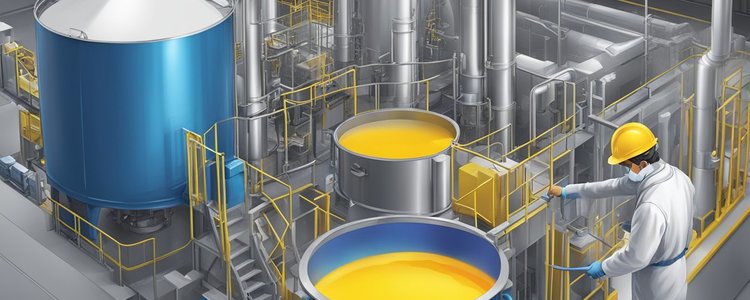Commonly used resins and their functions in SIS adhesive formulations, and how to select resins for cold-resistant and heat-resistant adhesives Technical Specification of Resins in SIS Adhesive Formulations Key Resins and Functional Mechanisms in SIS Adhesive Systems The principal resin components in SIS (Styrene-Isoprene-Styrene) adhesive formulations typically include hydrocarbon resins, terpene resins, and rosin derivatives. Their functional characteristics are elaborated as follows: Hydrocarbon Resins Classification: Derived from petroleum cracking by-products, categorized into: Aliphatic (C5 fraction)、Aromatic (C9 fraction)、Cycloaliphatic、Hydrogenated variants. Functional modulation: Resin type and structural configuration (C5, C9, or C5/C9 copolymer) govern critical performance parameters including Softening point regulation、Hardness-softness balance、Toughness optimization. Thermal resistance adaptation This enables tailored solutions for diverse bonding requirements under varying temperature regimes and mechanical stress conditions. 1.1 C5 Aliphatic Hydrocarbon Resin Tackification Performance: 1. Exhibits superior peel adhesion strength and rapid tack development 2. Functions as a high-efficiency tackifier in SIS systems 3 .Enhances initial adhesion and cohesive strength Compatibility & Stability: 1. Demonstrates excellent polymer compatibility with SIS matrix 2. Facilitates homogeneous dispersion for structural integrity 3. Enhances aging resistance through UV stabilization 4. Improves chemical resistance (water/acid) Rheological Modification: 1.Acts as plasticizer for low-temperature flexibility enhancement 2. Optimizes coating rheology through solvent miscibility 3. Improves substrate wetting characteristics 4. Environmental Profile: 5. Low VOC emission compliant with industrial sustainability standards 1.2 C9 Aromatic Hydrocarbon Resin Tackification Characteristics: 1. Moderate tackifying efficiency compared to C5 variants 2. Requires synergistic formulation with other resins/additives 3. Primarily functions as adhesion promoter 4. Compatibility Considerations: 5. Requires chemical modification for SIS compatibility optimization 6. Demands precise process control (temperature/shear parameters) 7. Typically used in composite resin systems Environmental Constraints: 1. Higher odor emission potential 2. Requires emission control measures in sensitive applications 2.1 Terpene Resin Classification: Modified natural resin with distinctive chemical architecture and performance characteristics. Functional Properties: Tackification and Rheology Modification: Enhances adhesive performance through viscosity regulation and cohesive strength optimization in SIS matrices. Demonstrates superior adhesion promotion and cohesive energy density improvement. Matrix Compatibility: Exhibits excellent miscibility with SIS polymers, enabling homogeneous phase dispersion and stable network formation. 2.2 Rosin Resin Classification: Derived from natural rosin through industrial processing. Liquid Rosin Resin: Lower molecular weight (Mn: 300-500 g/mol) with amorphous structure Solid Rosin Resin: Higher molecular weight (Mn: 800-1200 g/mol) demonstrating increased structural regularity and reduced polydispersity (PDI <1.5) Functional Properties: • Cure Acceleration & Tack Enhancement: Improves green strength development rate (t80 reduction ≥30%) while maintaining ultimate bond strength (ASTM D1002). • Durability Enhancement: Unique diterpene structure provides exceptional oxidation resistance (OIT >150 min per ASTM D3895), ensuring long-term performance stability under thermal and environmental stresses. • Rheological Control: Tunable viscosity (Brookfield RVF, 25°C: 500-5000 cP) and flow characteristics through processing parameter optimization. • Environmental Sustainability: Bio-based content exceeding 95% (ISO 16620), complying with REACH and FDA 21 CFR 175.105 regulations. Supplementary Additives: • Hydrogenated Petroleum Resins: Improve optical clarity (haze reduction ≥15%) and elastic recovery (ASTM D412) • Plasticizers: Modulate Shore A hardness (adjustment range: ±10 points) and low-temperature flexibility • Stabilizers: Antioxidant packages (e.g., hindered phenols/phosphites) and UV absorbers (e.g., benzotriazoles) for weather ability enhancement III. Resin Selection Methodology for Performance-Optimized SIS Adhesives Key formulation principle: Maintain optimal viscoelastic balance (tan δ @ application temperature ≈1) through strategic resin selection. 3.1 Cryogenic-Resistant Formulations (-40°C to -60°C service) a) Rosin System Modification: Replace 20-40% solid rosin with liquid derivative (Tg reduction: 10-15°C) Preferred specification: Acid number <20 mg KOH/g (ASTM D465) b) Petroleum Resin Selection: High aromaticity grades (C9 content >65%) with controlled crystallinity c) Elastomer Matrix Engineering: Incorporate SBS with high diblock content (>30%) Partial substitution with SSBR (styrene ≤25%, vinyl ≤50%) 3.2 High-Temperature Resistant Formulations (90-120°C service) Critical parameters: Thermomechanical stability (SAFT >100°C) and oxidative resistance a) Terpene Resins: High softening point grades (Ring & Ball: 115-125°C) Thermal stability: ≤2% weight loss @ 180°C (TGA) b) Hydrogenated C5 Resins: Hydrogenation degree >90% (iodine value <5 g I2/100g) Enhanced thermal-oxidative stability: ΔG' <10% after 500h @ 85°C c) Standard C5 Resins: Cost-effective alternative requiring formulation compensation: Antioxidant loading increase (0.5-1.0 phr) C5:C9 ratio optimization (70:30 recommended) Compatibilizer addition (e.g., malleated SBS)
